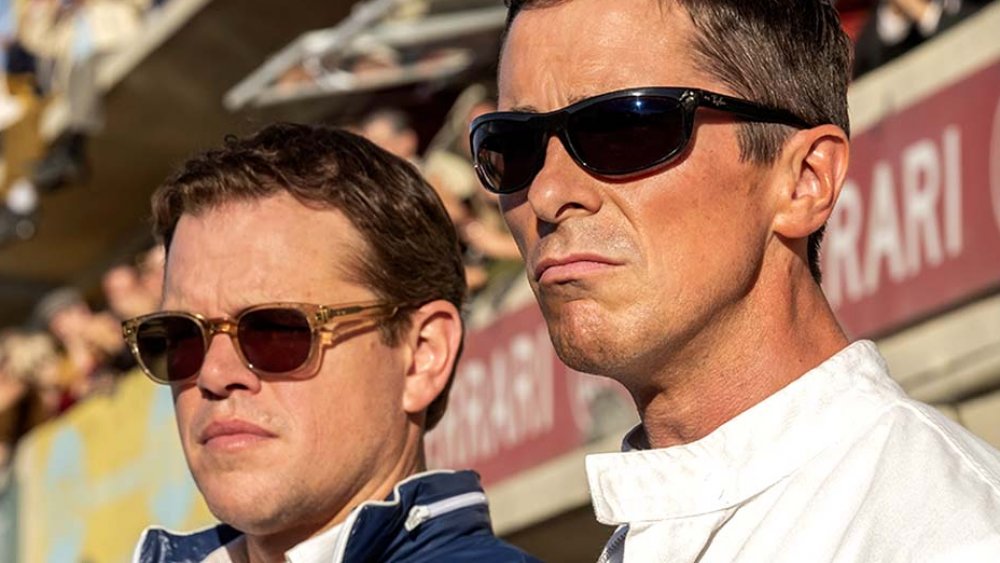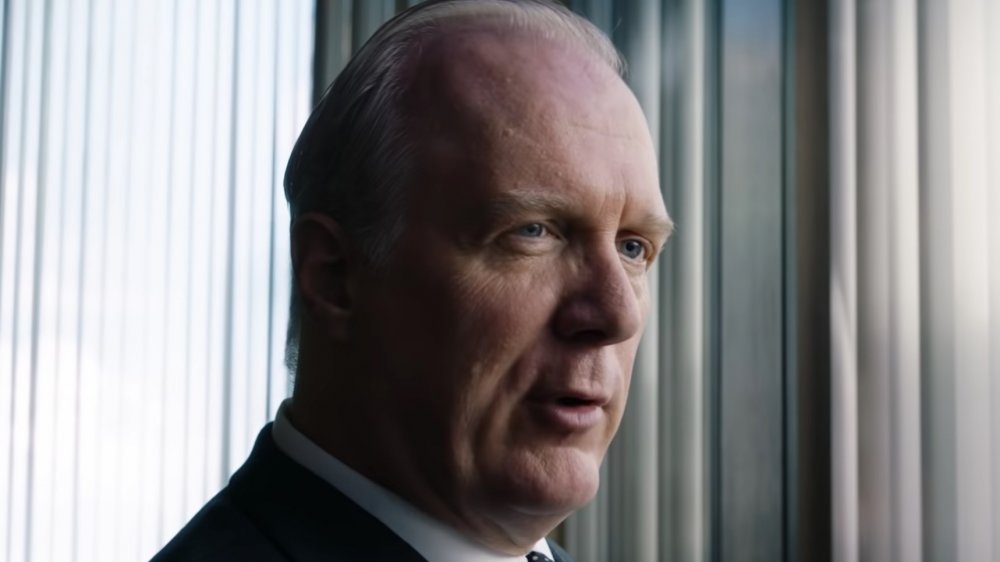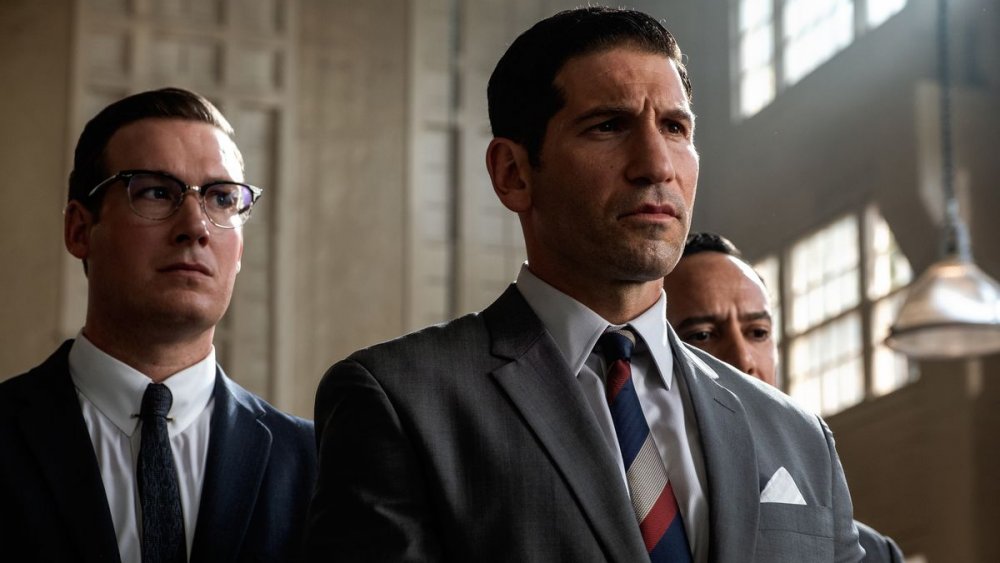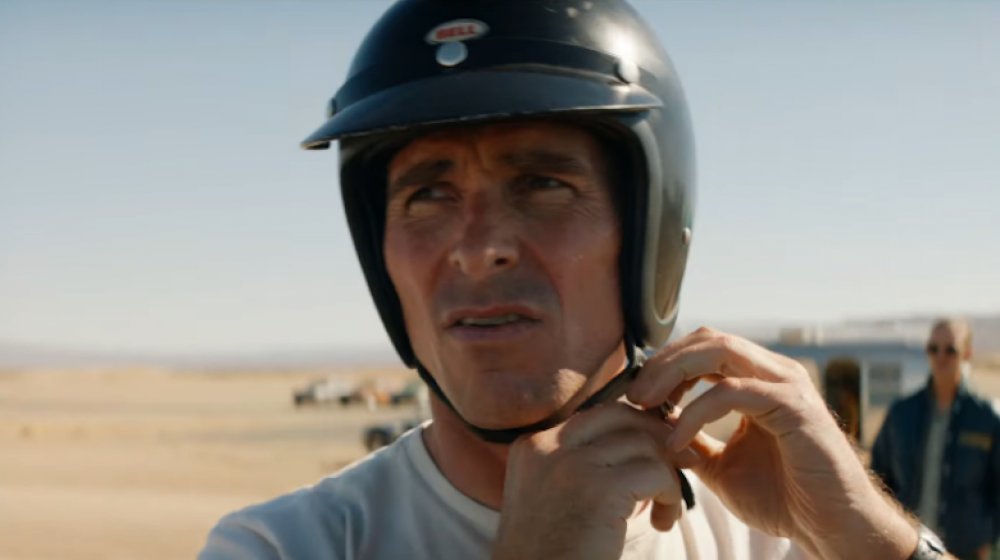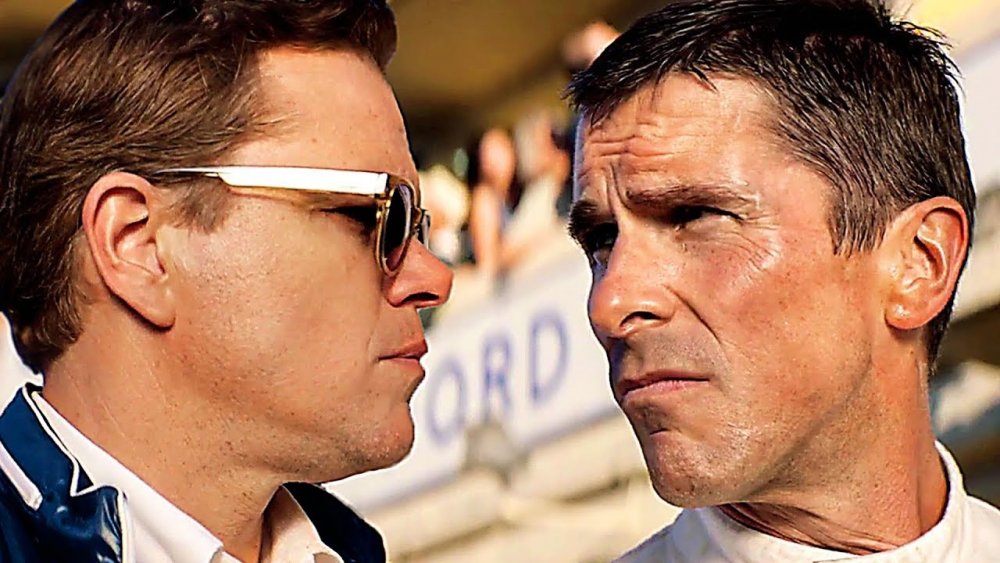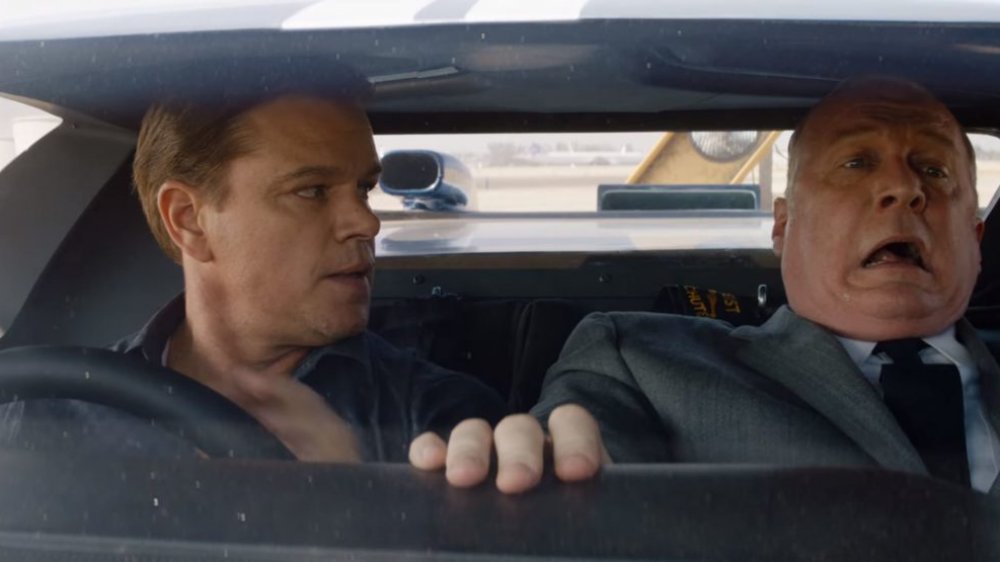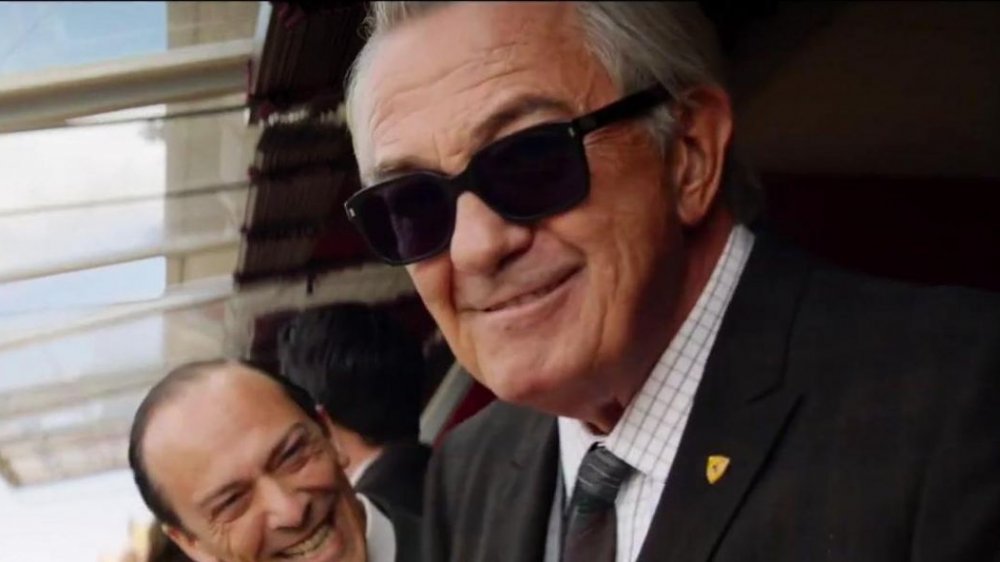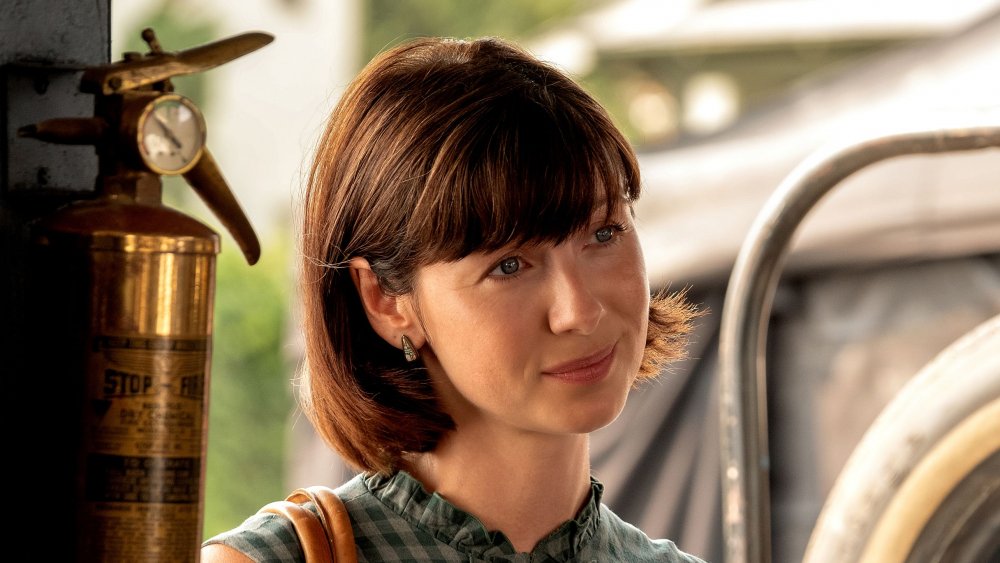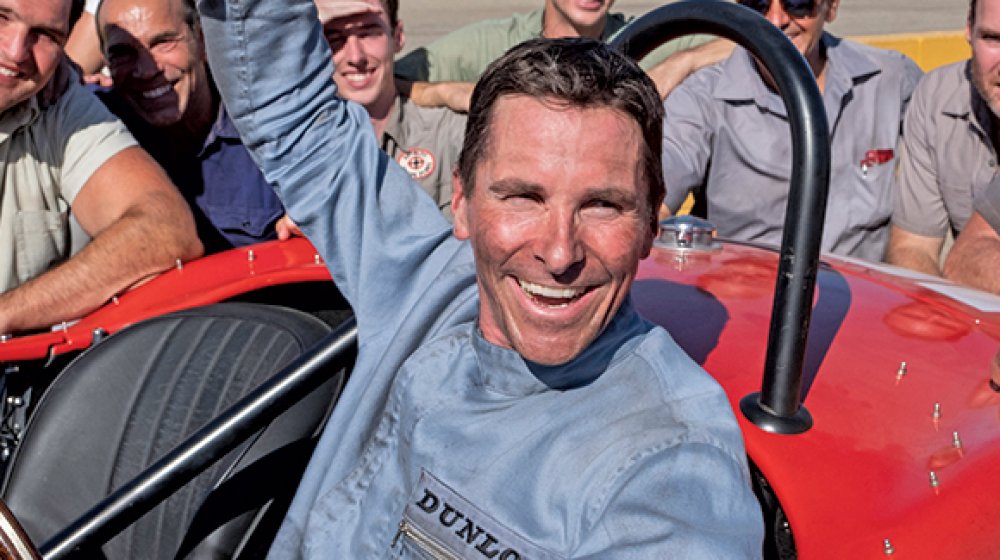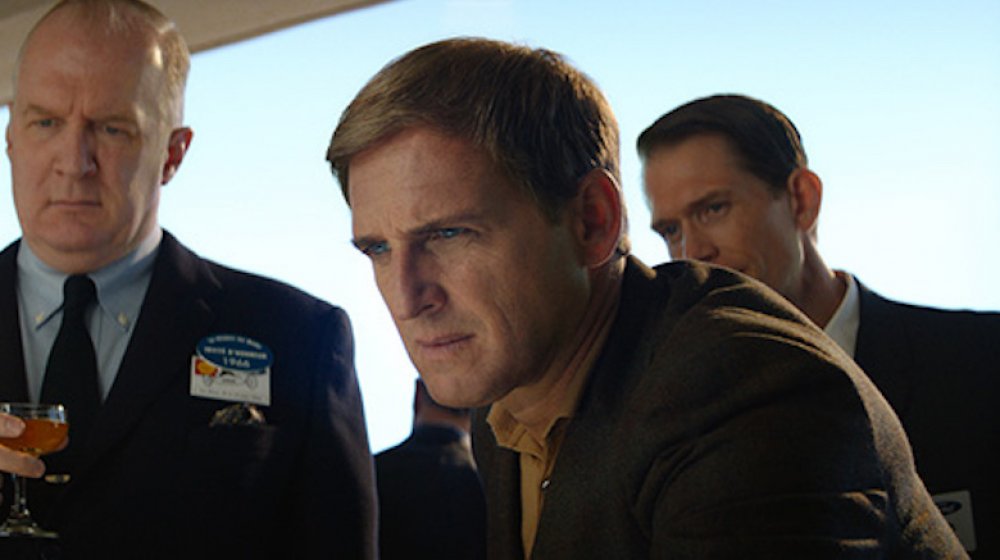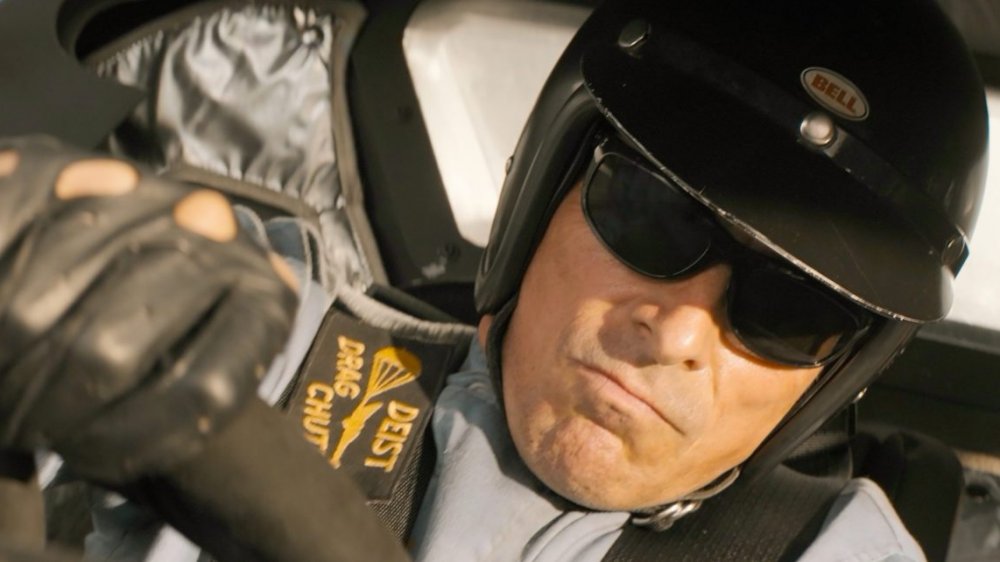10 Times Ford V Ferrari Lied To You
In 1966, a team of drivers representing Ford did something that had never been done before: They showed the world that American-made cars could be high-performance race vehicles, with Ford taking the first three spots in the iconic 24 Hours of Le Mans auto race in France. The event had theretofore been dominated by the sporty and stylish cars made in Italy by Enzo Ferrari, and beating Ferrari was chief among the goals of Ford. The victory was the end result of a hard-won, years-long fight, and it came in large part from two central figures, racer turned designer Carroll Shelby and his friend and colleague, colorful test driver Ken Miles. Their quest is the story behind the major movie Ford v Ferrari, with Matt Damon portraying Shelby and Christian Bale playing Miles.
Like any movie that's based on a true story, Ford v Ferrari's filmmakers— which include Logan director James Mangold and Edge of Tomorrow writers Jez and John-Henry Butterworth — took a few creative liberties to make the story more cinematic. Here are some of the things in Ford v Ferrari that just aren't completely accurate.
Henry Ford II didn't scream at an assembly line
Early in Ford v Ferrari, the film introduces Ford chairman Henry Ford II (Tracy Letts), a gruff, emotionally-driven guy who wants to win at all costs — both to boost his company and to live up to his daunting legacy as the third-generation head of Ford (because confusingly, Ford II was actually the original Henry Ford's grandson, not son.) As such, when the film opens, as executive Lee Iacocca tells Ford II and the audience, the company is in a sales slump the likes of which it has never seen. Ford II is so upset over the company's fortunes that he halts production on a bustling automobile assembly line to yell at the countless workers to come up with some ideas to save the company ... or to consider themselves unemployed.
Forbes says it's extremely unlikely that such a speech from Ford II ever occurred. It's a bit of dramatic fabrication to demonstrate Ford II's personality — and set the plot in motion — as quickly as possible. (One of the big ideas: going after a victory in the Le Mans.) It's just not plausible that Ford II, the guy at the top of the company food chain, would deign to address the rank-and-file. If he felt such a speech was necessary, he would have delegated the job to one of his many assistants or direct underlings.
Ferrari didn't insult Ford
The ostensible villain of the first half of Ford v Ferrari: the Scuderia Ferrari race car company, as personified by founder Enzo Ferrari. Ford executive Lee Iacocca (Jon Bernthal, pictured) suggests getting a jumpstart by purchasing Scuderia Ferrari, and heads to Italy to make a deal with Enzo Ferrari ... who backs out of it and sells to Fiat instead. This (along with Ferrari's insulting remarks about Ford and his cars, relayed by Iacocca) angers Ford II so much he pours his vast resources into beating Ferrari at his own game of building elite performance vehicles.
But Refinery 29 reports that, in reality, Ford had a number of more practical and reasonable reasons to go head-to-head with Ferrari on Ferrari's turf. As stated in the film, Ford's sales were in the midst of a years-long slump, and they needed something to make the company's cars (and reputation) seem sexy again. Better, faster, and more interesting cars, as demonstrated on an international scale by race car drivers, would bolster sales. Also, if Ferrari did say mean things about Ford II, the latter wouldn't have heard about them via Iacocca — that executive didn't travel to Italy with the contingent of deal-making Ford executives.
Ken Miles probably didn't sound like that
In Ford v. Ferrari, chameleonic Academy Award winner Christian Bale plays Ken Miles, a test driver turned engineer and race car driver who dominates the 1966 24 Hours of Le Mans on behalf of the Ford Motor Company. This isn't the first time Bale has played a real person — among others, characters Dicky Eklund in The Fighter and Dick Cheney from Vice are both actual people. (Sorry, but Batman isn't a historical figure.) Bale tends to disappear completely into his roles, gaining or losing tremendous amounts of weight as required to embody that person's physicality, and adopting accents and mannerisms as he sees fit.
But while there was plenty of footage of Eklund and Cheney to study, there was a surprising dearth of research material on Ken Miles. As suggested by Bale's characterization of Miles as a cranky, taciturn fellow, there's not a lot of video of the guy. That meant Bale had to invent his character's accent and quirks out of thin air. Did Miles really speak with that slight Birmingham accent? It's tough to say whether he did or did not.
A wrench in the works
In Ford v Ferrari, car developer Carroll Shelby (Matt Damon) and driver Ken Miles first meet during a rollicking day at Willow Springs Raceway in California — the former recruits the latter to be part of his Ford-funded drive to win the Le Mans. While the two will eventually become thick as thieves as both colleagues and friends, the relationship gets off to a rocky start. The irascible Miles gets so incensed with Shelby that he throws a wrench at the guy, which shatters his own windshield after Shelby ducks. Before long, these two are engaged in a knock-down drag-out fist fight, right there outside of a race track in a battle for dominance and a show of macho independence. It's a nice juxtaposition for what happens later in the movie, as the two become BFFs who have each other's back at all times.
The only thing is, according to History vs Hollywood, none of this ever happened. Shelby and Miles didn't meet or forge a working relationship at Willow Springs Raceway. Since they didn't meet there, that also means they never tried to beat the heck out of each other either. This sequence was all an embellishment by screenwriters to establish the personalities of Shelby and Miles and to create dramatic tension.
Sorry, no joyriding for Ford
The clash between the control-hungry corporate overlords from Ford and the engineers and drivers striving to make history comes to a head in one of the few moments of comic relief in Ford v Ferrari. Carroll Shelby's team, hard at work on a still-in-progress version of a car for Le Mans, receive word that Henry Ford II and sycophantic executive Leo Beebe will be visiting to check up on their progress — and to deliver word that Ken Miles will not be allowed to drive in the big race. So, Shelby connives to get his way, locking Beebe in and then taking Ford II for a high-speed, heart-stopping ride in that race car. It's a ridiculous, hilarious scene, in which Shelby cruises at ludicrous speeds with Ford II riding shotgun and screaming at the top of his lungs, partly in exhilaration, and partly in terror. When it's all over, he starts sobbing and cedes some control to Shelby.
This is all pure movie magic, however, a scripted method by which Shelby could win a battle on his way to the war. Forbes says there's certainly no way that Shelby would have — or would've been allowed — to take the head of a company out for a spin without any safety precautions.
Sorry, no Ferrari
While the title Ford v Ferrari implies a rivalry between Henry Ford (or Henry Ford II) and Enzo Ferrari, the film is actually about the Ford company's push to beat Ferrari's company in an important auto race. Nevertheless, the specter of the European automotive genius hangs over the whole film, and he literally makes a conspicuous appearance during the movie's primary, climactic set piece: the 1966 Le Mans race.
Henry Ford II and Ford executive Leo Beebe hang out in their VIP box, bugging Carroll Shelby down in the pit every chance they get, while Enzo Ferrari silently looks on from his box, the very picture of mid-century Italian cool in his perfectly tailored suit and sunglasses. After the Ford team shockingly proves legitimate, Ferrari quietly and symbolically walks away, but not before locking eyes with Shelby and giving a torch-passing head nod of approval. While that's a powerful cinematic moment, it's just that — Enzo Ferrari didn't congratulate Shelby at the Le Mans in 1966 because, as History vs Hollywood points out, he didn't even attend the Le Mans in 1966.
The future of auto racing will not be televised
Pretty much all sports movies end with the hero winning the big game or the big race. Throughout those dramatic final scenes, the film cuts to shots of the protagonist's loved ones anxiously watching the events unfold, cheering them on nervously from either the stands or watching on TV.
Ford v Ferrari employs the latter narrative device. As Ken Miles cruises to glory in the 1966 Le Mans, his wife, Mollie (Caitriona Balfe), and young son, Peter (Noah Jupe), watch the race via a television broadcast on their small, quaint, black-and-white, vintage mid-century TV set. Superimposed words on the screen tell viewers that the race is being piped to American television "via satellite," but there's just no way that happened. The first live, international satellite broadcast, a variety show called Our World (which featured The Beatles playing "All You Need is Love"), was staged in 1967, which obviously went down after the 1966 Le Mans race.
Everybody at Ford was just fine with Ken Miles
Movies need dramatic tension. It keeps audiences interested, and it keeps the stakes high, so that when there's a resolution, it provides satisfying closure to the story. In Ford v Ferrari, a big source of that simmering push-and-pull is the relationship between the prim and proper Ford executive board collective — particularly Henry Ford II and Leo Beebe — and Carroll Shelby, regarding the employment of test driver Ken Miles. Shelby really wants Miles to man his flagship car in the '66 Le Mans race, as he is instrumental in helping develop the vehicle and realize its potential. Beebe is never quite sold on Miles, finding him to be a bit of loose cannon and not a team player. For example, he worries that Miles will mouth off to the media about a small detail he doesn't like about the car, thus casting Ford in a bad light. It takes Shelby locking Beebe in an office and making a deal with Ford II to get Miles into the '66 Le Mans — if he wins at Daytona, he can race in France.
Back in the real world, according to History vs Hollywood, Ford wasn't much against Ken Miles. In the matter of run time and building drama to the '66 Le Mans, lots of precursor races are not depicted in the movie. Miles raced for Ford in those ... including the Le Mans in 1965, just a year before the historic one in 1966.
Ford executive Leo Beebe wasn't so bad
A more accurate title for Ford v Ferrari, one befitting the behind-the-scenes, one-on-one personal drama that led to a showdown between Ford and Ferrari racing teams in 1966, might be Shelby v Beebe. The movie's villain is Ford executive Leo Beebe, who throws up obstacles for the film's heroes to overcome. He's easy to hate, constantly kissing up to Henry Ford II, the Smithers to his Mr. Burns, while putting on a mean face to make life difficult for Shelby and Miles, going so far as to try to prevent Miles from driving in the climactic race that he'd helped Ford get to in the first place.
He ultimately still finds a way to pull rank on Miles and rob the guy of some glory. When Miles is about to finish the '66 Le Mans in a comfortable first place, with the next two racers driving Fords, Beebe gets in Ford II's ear to suggest that Miles slow down so all three Ford drivers can cross the finish line simultaneously. Beebe's idea is presented as a nasty move to undercut Miles. In real life, Beebe did suggest the three-way, but for good reasons. "I called Ken Miles in and held him back because I was afraid the drivers would knock one another off," Beebe said in an interview, excepted by Hemmings. "All you need is one good accident and you lose all your investment."
That death was way more heartbreaking in real life
For those who haven't yet seen Ford v Ferrari and don't know the true events behind the film, consider this your spoiler warning. After a bittersweet end to the 24 Hours of Le Mans in 1966 for Ken Miles — Ford wins, but the driver technically comes in second place during a simultaneous finish by Ford's top three cars — the story ends on a deeply sad and tragic note.
Just a few months after the climactic race, Miles gets back to work, preparing already for the '67 Le Mans by test driving a J-type on a track in Riverside, California. In the film, as his son and biggest fan Peter looks on, Miles' car takes a tough curve and disappears from sight, generating a cloud of ominous dust. The music gets sad, the film goes into slow-motion, Mollie Miles runs toward her husband, and the audience understands that Ken Miles died. It's implied that he made some kind of fatal mistake during his drive.
The real story of Miles' death is far more shocking. He did die during a test drive after the car rolled over several times and threw the driver from the vehicle. But various accounts, collected by Esquire, say that mechanical failure or an intrinsic problem with the vehicle killed Miles — not driver error.
